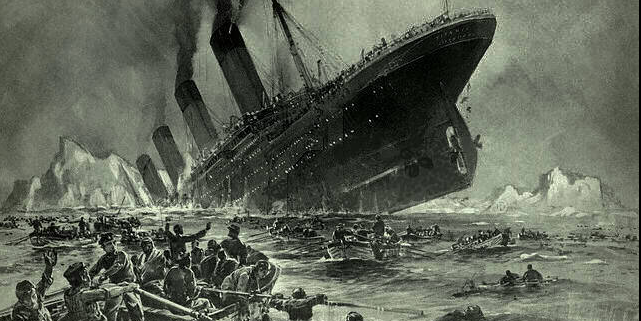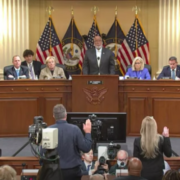Reconsidering Hirschman’s EXIT, VOICE, AND LOYALTY in the context of the great resignation
The 1960s were a tumultuous time in American political history. One of the legacies of this period was the publication of Albert O Hirschman’s classic and influential book, Exit, Voice and Loyalty: Responses to Declines in Firms, Organizations, and States. (1970). Although Hirschman’s book is instructive, it was primarily aimed at American political institutions that were losing their influence, and the examples that he used, are by today’s standards, a little outdated. More importantly, was the scant attention he devoted to what happens to members of organizations when they determine that there is a disconnect between the stated missions of the entities they joined, and the day to day reality of what they do.
Given the recent, so-called great resignation, where many workers are leaving their current jobs in search of more accommodating work settings, and institutions that they believe are more favorable to them, perhaps a rethinking of Hirschman’s argument is in order. Let’s start with first principles.
People (also known as members, employees, or recruits) join organizations for a variety of reasons, including, but not limited to, the need to affiliate with like-minded individuals, to achieve mutual goals, gain valuable skills, expertise, and experience, and to earn a paycheck.
To the newbie, whether we are talking about a nonprofit organization like a church, academic, or governmental based organization, or a for profit entity like a corporation, often seems like a great big black box; full of unknowns, mystery and even unlimited potential and opportunity. However, over time, the subtle nuances of the organization are revealed. The member, employee, recruit, etc. learns who likes whom, who detests whom, and where the organization chooses to invest its limited resources in furtherance of its mission, etc.. The newbie may also learn, besides recognizing the formal organizational chart, where they really fit in to the big picture. They may ask themselves are they essential, or are they window-dressing.
Over time, members also realize the disconnects between what the organization claims to be its mission, goals or objectives (typically presented through formal means of communication, authorized by its leadership,, and what it really does. The purpose of the organization is also revealed in the countless informal actions that the entity engages in (especially how they deal with challenges and crises).
Undoubtedly, both internal and external landscapes change. New people are hired and occupy management and leadership positions. Competitors emerge and threaten to undermine the longevity or market position of the organization. New technologies are created and the organization needs to make a decision whether it is in their best interests to adopt and if so how and when. Alternatively, black swan events like the COVID-19 pandemic happen.
Yes, we must pay heed to organizational development. And many entities will revise their mission statement (and other similar documents) to realign with this new reality, state or telegraph what they actually do or want to accomplish, and hire better or worse leaders and managers.
What happens in these situations?
Most members, employees or recruits, if they have been with the organization over a reasonable period of time, eventually notice or determine the disconnect.
How might or do these members/employees respond? There are at least four possible paths. These individuals may:
• Become tarnished, jaded, or disgruntled. These are the people you hate to run into at the copy machine. They contribute to the bad morale that spread throughout the organization.
• Continuously confront the senior administration or leadership in public or behind closed doors. These are the organizational bomb throwers (Similar to Hirschman’s notion of Voice).
• Seek greener pastures, and if successful in this pursuit quit the organization (Similar to Hirschman’s conception of Exit). And finally, they may
• Make peace with the organization and themselves, including making a series of cost-benefit calculations about a variety of reactions and choose the best one as situations develop (Dissimilar to Hirschman’s idea of Loyalty).
What are some possible solutions for modern organizations?
Short of ignoring the previously reviewed disconnect, leaders and managers who care about their organizations, not to mention their employees, members, or recruits, have a number of options they can pursue. These alternatives are pretty basic, but if not implemented properly they can backfire. They include:
• Using well-designed and implemented feedback loops. Typically this begins with professionally commissioned surveys sent to the rank and file. The questions need to tap issues that are of primary concern to the employees/members and be worded in a manner that is meaningful.
• Repeating this exercise on a regular and basis, and the results should be shared with employees, otherwise this exercise will create or foster distrust.
• Carefully reviewing the recommendations derived from this exercise, assessing them, and selectively implementing those that will address both organizational and members needs.
• Explaining to the membership why particular initiatives were implemented or ignored and why.
Conclusions
Some organizations, despite the contradictions between stated objectives and the day to day reality manage to survive, without any attempt at realignment. As long as the entity can attract a sufficient number of new members, and shed the old ones in a relatively effortless manner, can operate for a while. Over time, however the challenges raise their ugly heads.
It’s up to the leaders and managers to be the careful stewards of their organization. They need to be sufficiently invested in the health and longevity of the entity and take important steps towards realignment or change. They can’t simply pass this important activity off to subordinates and hope for the best.
Image credit
“Untergang der Titanic”,
as conceived by Willy Stöwer, 1912












